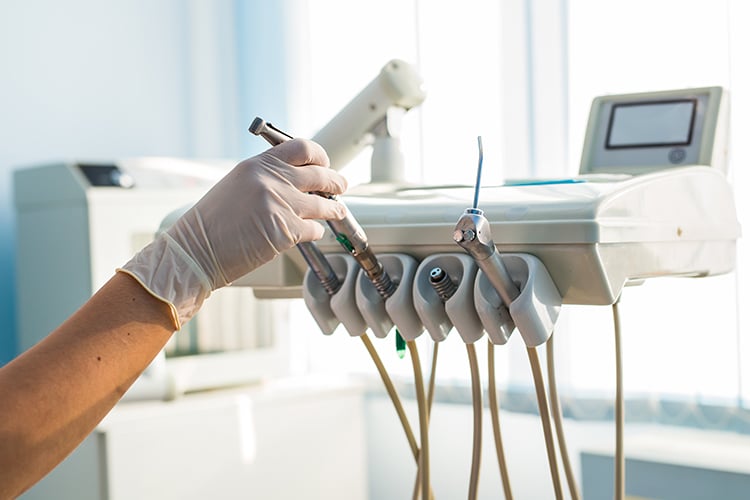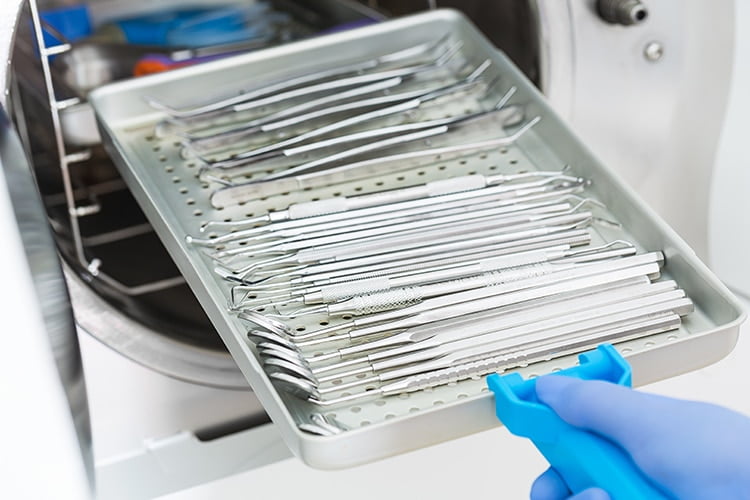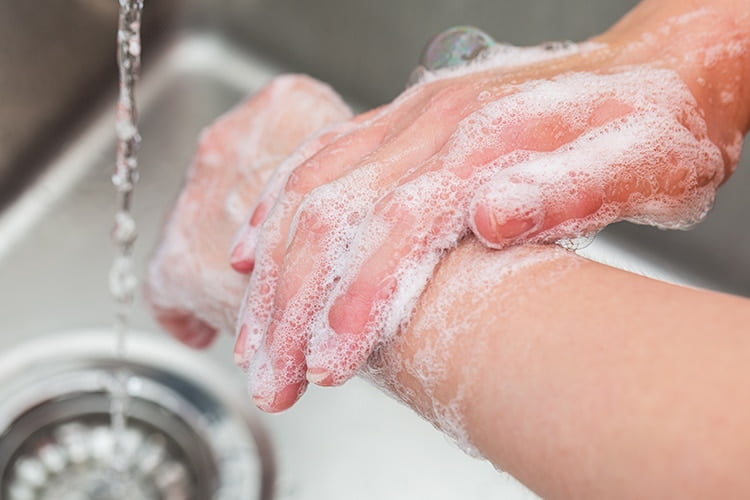In any kind of medical or clinical environment, proper cleaning, disinfecting, instrument and equipment sterilisation is critical.
There are strict rules of standards in Australia when it comes to hygiene, especially in a medical setting. Standards are living documents which reflect progress in science, technology and ethics, and as such are constantly changing.
Here at SDAI we are proud of our level of hygiene – we keep up-to-date with the latest rules and regulations for equipment sterilisation, ensuring our patients’ safety is our number one priority.
Types of equipment sterilisation
Sterilisation is not just one all-round process which can be used ubiquitously. There are a number of types of equipment sterilisation used for health and safety practices, which include:
Moist heat sterilisation
Also known as steam under pressure, a steam autoclave is the most dependable, fastest and economical medium known for killing microbes. Dental tools are taken apart where possible, allowing the steam to penetrate evenly. Because steam autoclaves use a damp heat, it’s not suitable for all products, such as plastics, which must be cleaned in a separate way.
Dry heat sterilisation
Dry heat sterilisation, using hot dry air, is one of the earliest forms of sterilisation, and has been used since the late 1800’s. As the names suggests, no moisture is used, making it suitable for certain materials that can’t go into a steam autoclave. Sterilisers of today are made with specially designed perforated convection chambers with heating elements and fans. The process by which microorganisms are destroyed, when subjected to this form of heat, is by oxidation.
Chemical sterilisation
Some materials can’t be treated to the type of high temperatures needed to kill microbes, so in that case chemicals can be used. Ethylene oxide gas is commonly used to sterilise and disinfect items because of its compatibility with most materials, and accounts for 70% of all chemical sterilisations. This method is highly effective, as the gas penetrates all porous materials, including plastic materials and films.
Filtration sterilisation
Although filters are not sterilising agents, they are used to remove microorganisms and particles from liquids and gases, thus rendering them sterile. Filters are also used on air intake lines following the sterilizing process to return chambers of steam and ethylene oxide gas sterilizers back to atmospheric pressure. Filters may be used in environmental control of airborne particulate contamination.
Basic hygiene standards
Sterilising dental instruments and equipment is a complex and sophisticated task, but we also take great care with the basics of hygiene too.
We wash our hands thoroughly here with anti-bacterial soap in accordance with the World Health Organization’s guidelines for hand washing, before and after dealing with each patient.
We also use disposable gloves, and wear a new pair for each client, along with fluid-resistant masks.
And of course, needless to say, our premises here are spotless, cleaned every day, ensuring our working environment is up to the latest health and safety standards.
You are safe in our hands
There is one thing we put above all else here at SDAI, and that is our patient’s safety.
We take our profession very seriously, and we know how important it is to have a clean workplace, using sterilised tools, in a sanitised environment.
All of our staff are educated in the latest Health & Safety rules and regulations and will never do anything to compromise your well-being.
We do everything we can to make your dental experience comfortable and relaxed, and to have a full understanding of what’s going on at every stage of treatment.
We follow the same rules here as we would in all our personal lives: respect, integrity and honesty – these are the foundations for long-lasting and valuable relationships with our patients.
If you have any questions about our dental practice, or dental equipment sterilisation, please don’t hesitate to contact us today.


